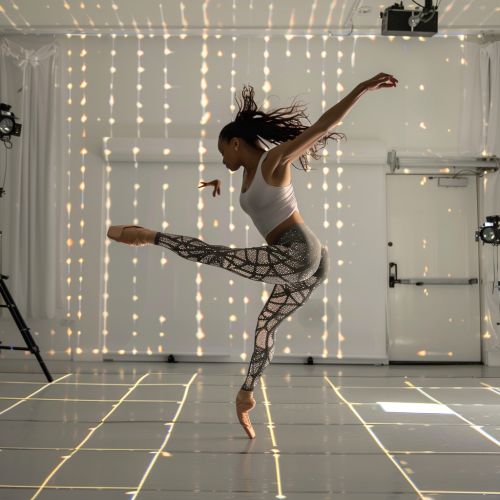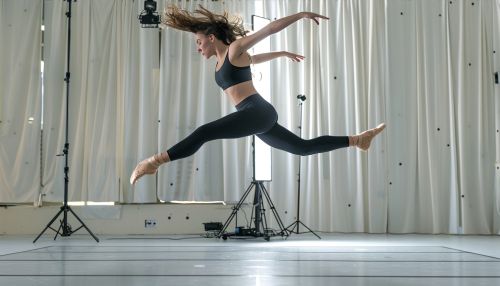Dance Science
Introduction
Dance Science is an interdisciplinary field that investigates the application of scientific principles to dance. It encompasses various domains including biomechanics, physiology, psychology, and motor control, aiming to enhance performance, reduce injury risk, and improve the overall well-being of dancers. This article delves into the intricate aspects of Dance Science, providing a comprehensive overview of its subfields, methodologies, and practical applications.
Historical Background
The formal study of Dance Science began in the late 20th century, although the integration of scientific principles in dance can be traced back to earlier periods. The establishment of organizations such as the International Association for Dance Medicine & Science (IADMS) in 1990 marked a significant milestone, promoting research and education in this field. Early pioneers like Rudolf Laban and Irmgard Bartenieff laid the groundwork by exploring movement analysis and somatic practices.
Biomechanics in Dance
Biomechanics is a crucial component of Dance Science, focusing on the mechanical aspects of movement. It involves the analysis of forces, motion, and the mechanical properties of the human body during dance activities.
Kinematics and Kinetics
Kinematics refers to the study of motion without considering the forces that cause it, while kinetics involves the analysis of forces and their effects on motion. In dance, kinematic analysis can be used to examine joint angles, velocities, and accelerations during various movements. Kinetic analysis, on the other hand, helps in understanding the forces exerted by muscles and external factors such as gravity and ground reaction forces.
Motion Capture Technology
Motion capture technology has revolutionized the study of dance biomechanics. Systems like Vicon and Qualisys use infrared cameras and reflective markers to capture detailed movement data. This technology allows researchers to create three-dimensional models of dancers, providing insights into movement patterns, joint loading, and muscle activation.


Physiology of Dance
The physiological aspects of dance involve the study of how the body responds and adapts to the physical demands of dancing. This includes cardiovascular, respiratory, and muscular systems.
Energy Expenditure and Metabolism
Dancing is a physically demanding activity that requires significant energy expenditure. Studies have shown that different dance styles have varying metabolic costs. For instance, ballet and contemporary dance often involve sustained, high-intensity movements, leading to increased aerobic and anaerobic energy demands. Understanding these metabolic requirements helps in designing effective training and nutrition programs for dancers.
Muscle Function and Fatigue
Muscle function and fatigue are critical areas of study in Dance Science. Electromyography (EMG) is commonly used to measure muscle activation during dance movements. This data helps in identifying muscle imbalances and developing targeted strength and conditioning programs. Additionally, understanding muscle fatigue mechanisms can aid in injury prevention and performance optimization.
Psychology in Dance
The psychological aspects of dance encompass mental health, performance anxiety, motivation, and the cognitive processes involved in learning and performing dance movements.
Performance Anxiety
Performance anxiety is a common issue among dancers, potentially affecting their performance and overall well-being. Cognitive-behavioral strategies, mindfulness, and relaxation techniques are often employed to manage anxiety levels. Research in this area aims to develop effective interventions that can help dancers cope with performance-related stress.
Motor Learning and Control
Motor learning and control involve the processes by which dancers acquire, refine, and retain dance movements. Theories such as the Schema Theory and Dynamic Systems Theory provide frameworks for understanding how dancers learn and adapt their movements. Techniques like mental imagery and observational learning are also explored to enhance motor learning in dance.
Injury Prevention and Rehabilitation
Injury prevention and rehabilitation are critical components of Dance Science, given the high physical demands and risk of injury in dance.
Common Dance Injuries
Common injuries in dance include sprains, strains, stress fractures, and tendinitis. These injuries often result from overuse, improper technique, or inadequate conditioning. Understanding the etiology and risk factors of these injuries is essential for developing effective prevention strategies.
Rehabilitation Techniques
Rehabilitation techniques in dance involve a combination of physical therapy, strength training, and somatic practices. Techniques such as Pilates, Feldenkrais Method, and Alexander Technique are frequently used to aid recovery and improve movement efficiency. Additionally, advancements in technology, such as the use of wearable sensors and biofeedback, are being integrated into rehabilitation programs.
Applications of Dance Science
The practical applications of Dance Science extend to various domains including performance enhancement, education, and healthcare.
Performance Enhancement
Performance enhancement involves optimizing physical and mental aspects to improve dance performance. This includes tailored training programs, nutritional guidance, and psychological support. The integration of scientific principles into training regimens helps dancers achieve peak performance while minimizing injury risk.
Dance Education
Dance Science plays a significant role in dance education by informing teaching methodologies and curriculum development. Educators use scientific insights to create safe and effective training environments, promoting long-term health and career longevity for dancers.
Healthcare and Dance Medicine
Dance Medicine is a specialized field within Dance Science that focuses on the medical care of dancers. Healthcare professionals, including physicians, physical therapists, and nutritionists, collaborate to address the unique needs of dancers. This interdisciplinary approach ensures comprehensive care, from injury prevention to rehabilitation and overall health maintenance.
Future Directions in Dance Science
The future of Dance Science is promising, with ongoing research and technological advancements driving the field forward.
Technological Innovations
Emerging technologies such as wearable devices, virtual reality, and artificial intelligence are being explored for their potential applications in Dance Science. These innovations offer new possibilities for movement analysis, training, and rehabilitation.
Interdisciplinary Research
Interdisciplinary research is crucial for the continued growth of Dance Science. Collaboration between scientists, healthcare professionals, and dance practitioners fosters a holistic understanding of dance and its impact on the human body and mind.
